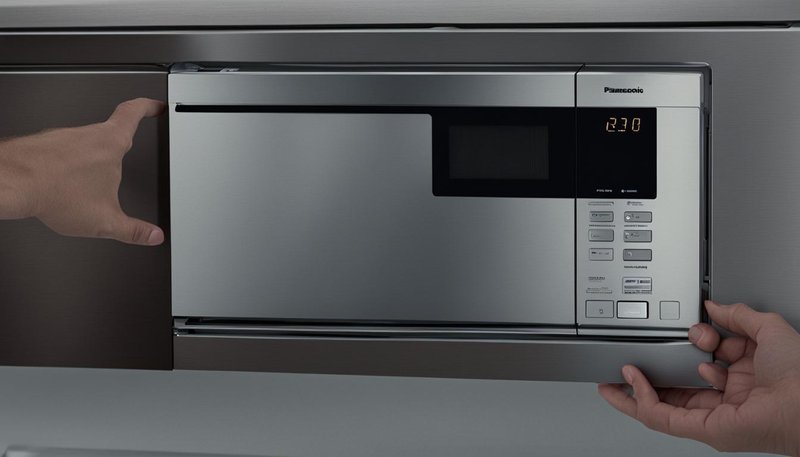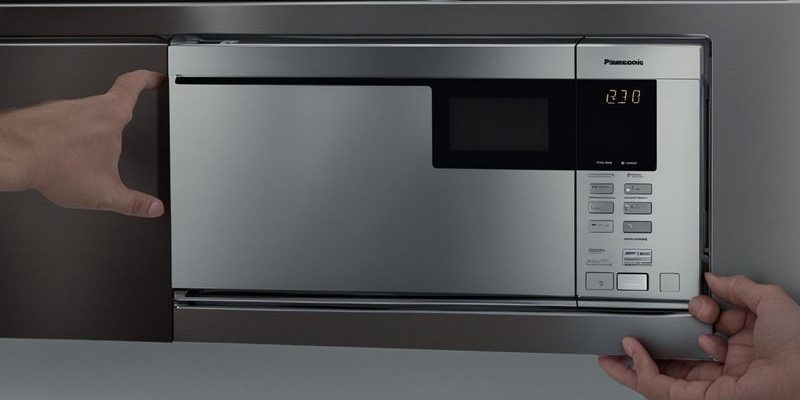
Simply put, the “UE” error code on your Panasonic microwave is a way for the appliance to communicate that its turntable isn’t rotating properly. Think of it as a warning light on your car’s dashboard; it signals that something isn’t functioning as it should. Your microwave relies on the turntable to ensure food is evenly cooked. Without proper rotation, you might find some parts of your dish piping hot while others remain stone cold. To many, this issue might seem minor, but it’s essential for the overall performance and longevity of your microwave.
Understanding the UE Error Code
When your microwave displays the “UE” error code, it’s alerting you that the turntable isn’t spinning as expected. This could be due to a variety of reasons. One common cause is that the turntable might be physically obstructed. Imagine trying to spin a top but having it continuously bump into objects; it wouldn’t rotate smoothly, would it? Similarly, if there’s something large or bulky inside your microwave, it might prevent the turntable from moving freely.
Another reason could be related to the turntable motor. Just like any other motor, the one in your microwave can wear out over time, or its connections might become loose. You can think of it like a bicycle chain that’s come off its sprockets — the bike’s wheels won’t turn properly if the chain isn’t in place. In some cases, the problem might even lie with the microwave’s control board that sends signals to the motor.
If you find that repositioning your dish or cleaning out any obstructions doesn’t solve the issue, it might be time to consider further investigation. In most situations, getting to the root of internal mechanical problems might require a more expert touch, which is where calling a technician comes in.
When to Attempt a DIY Fix
Before rushing to call a technician, there are a few simple things you might want to check. First, ensure that the microwave’s turntable is seated correctly on its guide rings. It’s like making sure a vase is sitting correctly on its stand; if it’s off-kilter, it won’t sit right. Sometimes, the solution is as simple as realigning the turntable so it snugly fits into place.
Next, inspect the interior of your microwave. Look for any food debris or objects that might have fallen beneath the turntable, obstructing its rotation. Cleaning this area can sometimes resolve the problem, allowing your microwave to function properly again. Remember, always ensure the microwave is unplugged before you start poking around inside — safety first!
If these checks don’t resolve the issue, there might not be much more you can safely do without professional tools and expertise. Most of us wouldn’t try to fix a broken clock without knowing how it ticks, right? In much the same way, your microwave might need a professional touch beyond basic troubleshooting.
When to Call a Technician
Now, let’s talk about when it’s time to call in the pros. If you’ve already tried the basic fixes and the “UE” error code persists, it’s likely time to seek expert assistance. A technician has specialized knowledge and tools to diagnose and repair more complex issues, such as a faulty motor or a problem with the microwave’s internal controls.
Consider the technician as a doctor for your appliances. Just like you’d visit a doctor if your recurring headaches don’t go away, a technician can provide a precise diagnosis and a solution for your microwave. This approach not only resolves the current issue but prevents potential future problems.
Moreover, opening up your microwave to attempt more complex repairs can be risky if you’re unfamiliar with its inner workings. Microwaves contain high-voltage components that can be dangerous if mishandled. So, when in doubt, let the experts handle it!
Preventative Tips for Future Reference
Once your microwave is up and running again, it’s worth adopting a few habits to prevent future issues. Regular maintenance is key. Keep the interior and the turntable area clean and free from debris. It’s much like maintaining a clean work desk — a little effort goes a long way in ensuring everything functions smoothly.
Also, avoid overloading the microwave. Keep in mind that heavier or oddly-shaped dishes might prevent the turntable from rotating. Use containers that fit comfortably inside and allow room for rotation. Think of it as choosing the right-sized backpack for a hike; you don’t want it too bulky or too tight — just right for the journey.
Finally, handle your microwave with care. Gentle use not only extends its lifespan but keeps it working efficiently. Keep these tips in mind, and you’ll likely avoid encountering pesky error codes in the future, keeping your appliance running like a champ for many meals to come.
